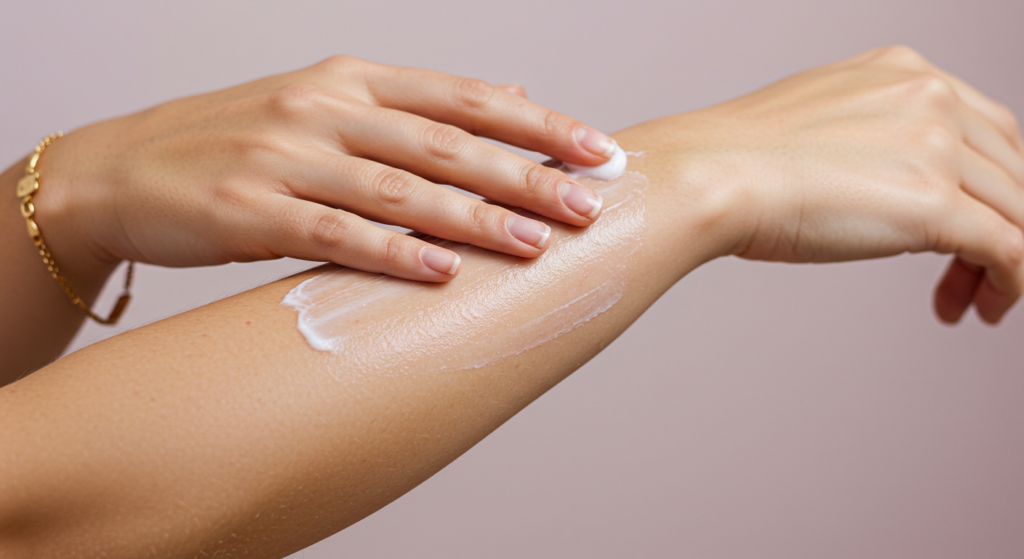La dermatitis alérgica, también conocida como eccema alérgico, es una afección cutánea inflamatoria común que se desencadena por una reacción alérgica. Se caracteriza por picazón e inflamación en la piel, que a menudo se manifiesta como erupciones rojas y con bultos. Comprender sus causas, reconocer sus síntomas e implementar estrategias de tratamiento eficaces es crucial para controlar esta afección y mejorar la calidad de vida. Este artículo ofrece una visión general de la dermatitis alérgica, guiándole en su identificación, tratamiento y prevención.
Comprensión de la dermatitis alérgica
La dermatitis alérgica es una reacción de hipersensibilidad de tipo I, lo que significa que el sistema inmunitario reacciona de forma exagerada a una sustancia inofensiva (alérgeno). Esta reacción provoca la liberación de histamina y otros mediadores inflamatorios, causando los síntomas característicos. Los alérgenos pueden variar ampliamente, desde sustancias ambientales comunes como el polen, la caspa de mascotas y los ácaros del polvo, hasta ciertos alimentos, cosméticos y metales. La predisposición genética desempeña un papel importante; las personas con antecedentes familiares de eccema, asma o fiebre del heno tienen un mayor riesgo.
La afección no es contagiosa, lo que significa que no se transmite de persona a persona por contacto. Sin embargo, la picazón intensa puede provocar rascado, lo que puede lesionar la piel y aumentar el riesgo de infecciones secundarias. La gravedad de la dermatitis alérgica puede variar de leve a grave, dependiendo del alérgeno, la sensibilidad de la persona y el grado de afectación cutánea. Un diagnóstico preciso es esencial para un tratamiento eficaz, que a menudo implica una historia clínica completa, una exploración física y, posiblemente, pruebas de alergia.
El mecanismo subyacente implica la activación de las células T cooperadoras 2 (Th2), que liberan citocinas que contribuyen a la inflamación y a la disfunción de la barrera cutánea. Esta barrera deteriorada facilita la penetración de los alérgenos en la piel, lo que exacerba la respuesta alérgica. La naturaleza crónica de la afección suele provocar ciclos de inflamación y remisión, con períodos de brotes intercalados con períodos de relativa calma. Comprender esta naturaleza cíclica es clave para desarrollar un plan de tratamiento a largo plazo.
Un tratamiento eficaz requiere un enfoque multifacético que combine la evitación de alérgenos, tratamientos tópicos y, en algunos casos, medicamentos sistémicos. El objetivo es reducir la inflamación, aliviar el picor y restaurar la función de barrera cutánea. La intervención temprana es crucial para evitar que la afección se cronifique y afecte significativamente la calidad de vida.
Identificación de síntomas y desencadenantes clave
El síntoma distintivo de la dermatitis alérgica es el picor intenso, a menudo acompañado de una erupción cutánea característica. Esta erupción puede manifestarse como manchas rojas e inflamadas en la piel, que a menudo se ven secas, escamosas y agrietadas. Las zonas afectadas pueden presentar picor intenso, lo que provoca rascado, lo que puede irritar aún más la piel y potencialmente causar infecciones secundarias. En bebés y niños pequeños, la erupción suele aparecer en la cara, el cuero cabelludo y las extremidades.
Los desencadenantes comunes de la dermatitis alérgica varían considerablemente según la sensibilidad individual. Estos pueden incluir alérgenos de contacto como el níquel (en joyería), fragancias en cosméticos y jabones, ciertos tejidos (lana, fibras sintéticas) y sustancias de origen vegetal como la hiedra venenosa. Los alérgenos inhalantes, como el polen, los ácaros del polvo y la caspa de mascotas, también pueden desencadenar o empeorar los síntomas. Las alergias alimentarias también pueden influir, siendo los culpables comunes los lácteos, los huevos, el cacahuete y la soja.
Identificar los desencadenantes específicos es crucial para un manejo eficaz. Esto suele implicar llevar un registro detallado de las posibles exposiciones y la aparición de los síntomas. Las pruebas epicutáneas, un procedimiento en el que se aplican pequeñas cantidades de posibles alérgenos sobre la piel, pueden ayudar a identificar los alérgenos de contacto. Los análisis de sangre pueden utilizarse para evaluar la presencia de anticuerpos IgE específicos contra alérgenos inhalantes y alimentarios comunes. La observación minuciosa y la colaboración con un profesional de la salud son esenciales para identificar los desencadenantes individuales.
La ubicación y la apariencia de la erupción pueden proporcionar pistas sobre la causa subyacente. Por ejemplo, una erupción localizada en las manos puede sugerir dermatitis de contacto por una sustancia específica, mientras que una erupción más extendida podría indicar una reacción alérgica más generalizada o dermatitis atópica. Reconocer estos patrones ayuda a orientar las investigaciones y las estrategias de tratamiento.

Estrategias de tratamiento eficaces
El tratamiento para la dermatitis alérgica busca reducir la inflamación, aliviar el picor y restaurar la barrera cutánea. Los corticosteroides tópicos suelen ser el tratamiento de primera línea, disponibles en diversas concentraciones según la gravedad de la afección. Estos medicamentos reducen la inflamación y el picor, pero su uso prolongado puede tener efectos secundarios, por lo que su aplicación debe ser supervisada cuidadosamente por un profesional de la salud.
Los inhibidores tópicos de la calcineurina, como el tacrolimus y el pimecrolimus, son otra opción, especialmente para el eccema leve a moderado, sobre todo en zonas donde no se recomienda el uso prolongado de corticosteroides. Estos medicamentos actúan suprimiendo la respuesta inmunitaria de la piel. Las cremas hidratantes son esenciales para mantener la hidratación de la piel y prevenir la sequedad, que puede agravar el picor y la inflamación. La aplicación frecuente de emolientes ayuda a reparar la barrera cutánea.
En casos más graves, pueden ser necesarios corticosteroides sistémicos para controlar la inflamación generalizada. Sin embargo, estos medicamentos suelen usarse durante períodos cortos debido a la posibilidad de efectos secundarios significativos. La fototerapia, que utiliza luz ultravioleta (UV) para reducir la inflamación, puede ser una opción de tratamiento eficaz para algunas personas. Las terapias biológicas, dirigidas a componentes específicos del sistema inmunitario, se utilizan cada vez más en casos graves resistentes al tratamiento.
La elección del tratamiento depende de la gravedad de la afección, la edad del individuo y la presencia de otras afecciones médicas. Un enfoque colaborativo que involucra a... dermatólogo La consulta con un alergólogo es fundamental para desarrollar un plan de tratamiento personalizado que aborde las necesidades específicas del paciente. Las citas de seguimiento periódicas son esenciales para supervisar la eficacia del tratamiento y ajustar el plan según sea necesario.

Manejo y prevención de los brotes
Evitar los desencadenantes conocidos es fundamental para prevenir los brotes. Esto puede implicar cambios en el estilo de vida, como usar detergentes y jabones hipoalergénicos, evitar ciertas telas y minimizar la exposición a alérgenos conocidos como el polen y la caspa de mascotas. Bañarse regularmente con agua tibia y limpiadores suaves puede ayudar a mantener la piel hidratada y prevenir la sequedad.
Mantener una buena hidratación de la piel es crucial. El uso regular de emolientes e hidratantes ayuda a restaurar la barrera cutánea y a prevenir la sequedad, un factor importante en los brotes de eccema. Las técnicas de manejo del estrés, como el yoga, la meditación o los ejercicios de respiración profunda, también pueden ser beneficiosas, ya que el estrés puede exacerbar los síntomas. Dormir bien y llevar una dieta saludable también son cruciales para el bienestar general y la salud de la piel.
Las revisiones periódicas con un profesional de la salud son esenciales para monitorear la afección y ajustar el plan de tratamiento según sea necesario. El tratamiento oportuno de cualquier infección secundaria, como infecciones bacterianas o fúngicas, es vital para prevenir complicaciones. Aprender a identificar las señales tempranas de un brote, como el aumento de la picazón o la sequedad, permite una intervención oportuna y puede ayudar a prevenir el empeoramiento de la afección.
La educación del paciente y las estrategias de autocuidado son fundamentales para el éxito a largo plazo. Comprender los desencadenantes, reconocer los síntomas tempranos y adherirse al plan de tratamiento prescrito son esenciales para minimizar la frecuencia y la gravedad de los brotes. Los grupos de apoyo y los recursos en línea pueden proporcionar información valiosa y apoyo emocional a las personas que viven con dermatitis alérgica.
La dermatitis alérgica es una afección crónica que requiere un tratamiento continuo. Al comprender sus causas, identificar los desencadenantes e implementar estrategias de tratamiento eficaces, las personas pueden mejorar significativamente su calidad de vida y minimizar el impacto de esta afección cutánea común. Un enfoque colaborativo con profesionales de la salud y estrategias de autocuidado son clave para el éxito a largo plazo y la prevención de brotes. Recuerde consultar con un profesional de la salud para obtener un diagnóstico y recomendaciones de tratamiento personalizadas.
Descubra la experiencia de la Dra. Ebru Okyay, su médico de confianza. dermatólogo en AntalyaYa sea que esté buscando abordar problemas médicos de la piel o mejorar su belleza natural con tratamientos cosméticos, el Dr. Okyay está aquí para ayudarlo. Con atención personalizada y técnicas avanzadas, lograr sus objetivos para la piel nunca ha sido tan fácil.
